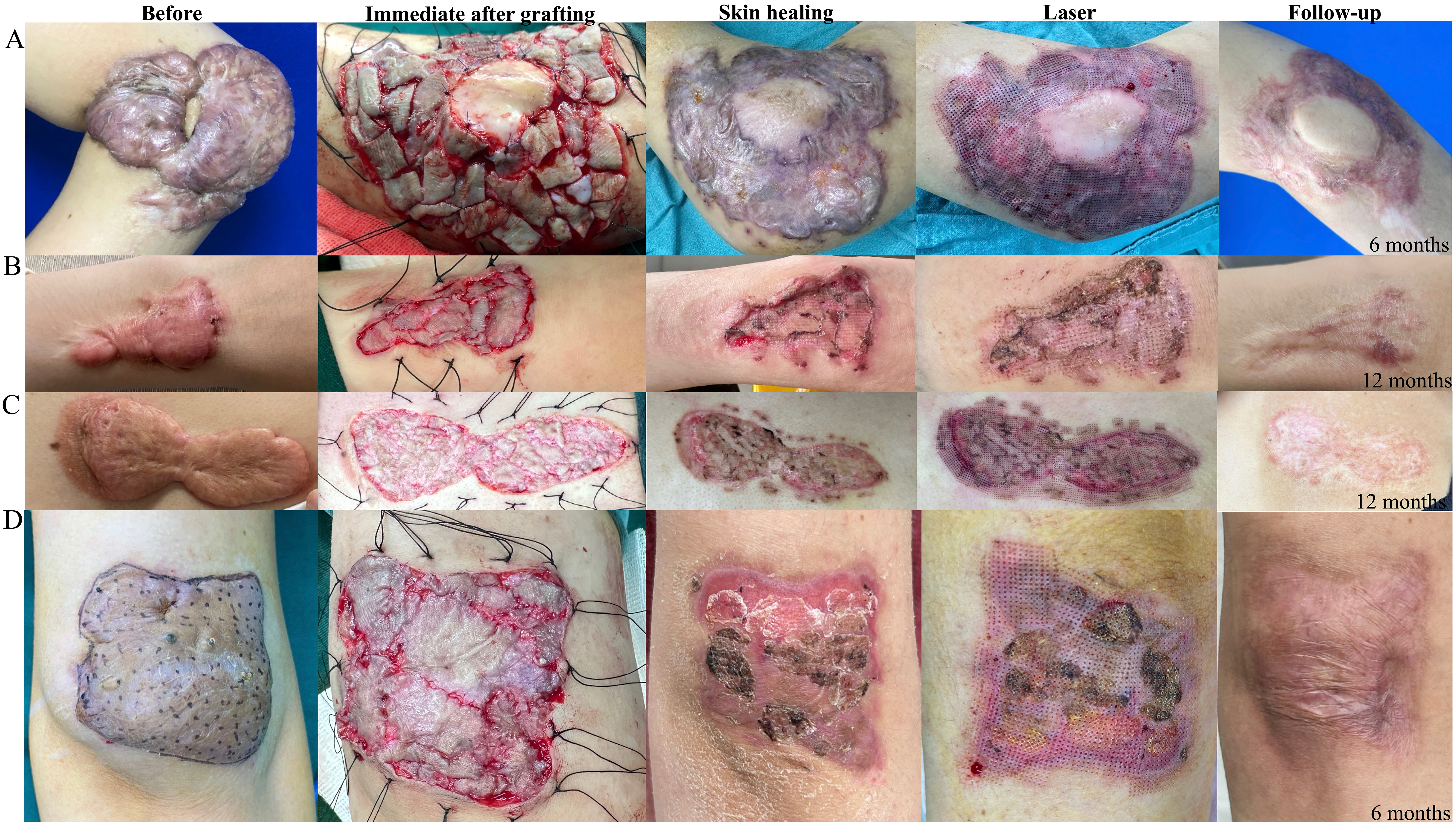fig2
Figure 2. Representative cases of keloid treatment using scar split-thickness skin replantation combined with LCR therapy. This figure illustrates the sequential stages of treatment for four different keloid cases (A-D), showing the progression from preoperative condition to long-term follow-up. Column 1 (Before): Preoperative appearance of keloid lesions, demonstrating varying degrees of hypertrophic growth and contracture; Column 2 (Immediate after grafting): Intraoperative view following keloid excision and split-thickness skin graft replantation onto thinned keloid dermis. The split-thickness skin grafts were sutured in place; Column 3 (Skin healing): Early postoperative healing stage, showing re-epithelialization and initial integration of the grafts; Column 4 (Laser): Postoperative appearance after laser therapy as part of the LCR treatment protocol, aimed at modulating fibroblast activity and improving scar texture; Column 5 (Follow-up): Long-term outcomes at 6 months or 12 months postoperatively, revealing well-healed scars with minimal recurrence and improved skin texture. LCR: Laser-carbon dioxide-radiotherapy.









